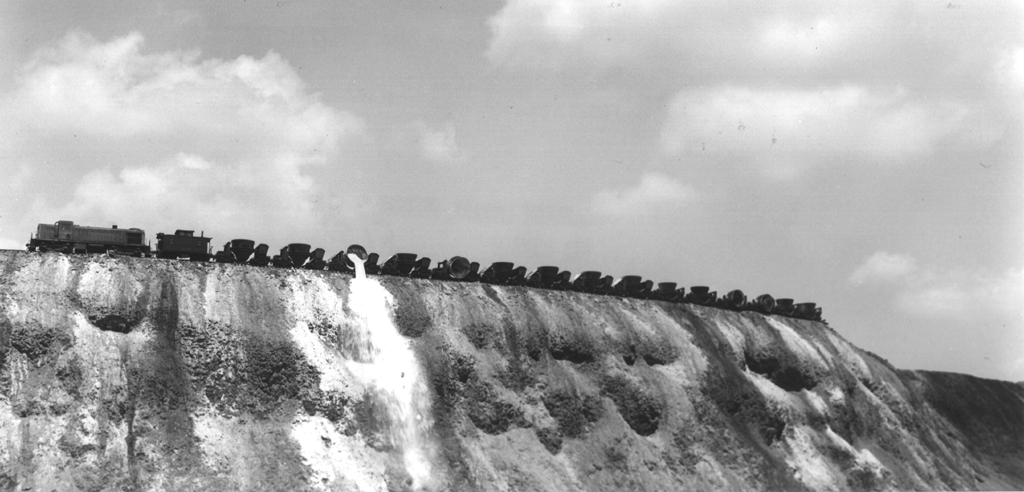Nine Mile Run - Industrial History
 |
| A train dumps slag atop an existing slag heap. Source: CMU Nine Mile Run Greenway Project. |
Pittsburgh has a robust and proud history of heavy industry, which ranges from iron and steel production and coal mining to meatpacking and rendering. By 1900 the steel industry was in full throttle, and consequently environmental and health conditions declined dramatically. Frederick Law Olmsted Jr.’s involvement with the city was tied to this environmental decline, and the city officials' decision to take a more active role in planning the future of Pittsburgh's growth and development. Manufacturing also involves waste products, and the deposition of such waste. Slag is one of these byproducts of iron and steel production. When iron (or any other metal) is smelted, impurities rise to the top and are removed, creating slag. Today, slag is an easy product to reuse, in that the metals that may constitute waste from one product are useful inputs – or ends themselves – for another. Slag is often reprocessed to extract different minerals, and/or used in the creation of concrete. In the early 20th century, and indeed well throughout the later decades, slag was merely deposited in large “slag heaps.” Nine Mile Run was one such depository. While Nine Mile Run was zoned residential by the city in 1923, the existing owner (Duquesne Slag) grandfathered dumping usage in. Twenty million tons of slag dumped by Duquesne until around 1972. Over the course of the redevelopment, 200,000 tons of topsoil will be dumped on the slag to cover it and make it suitable for housing and revegetation. |